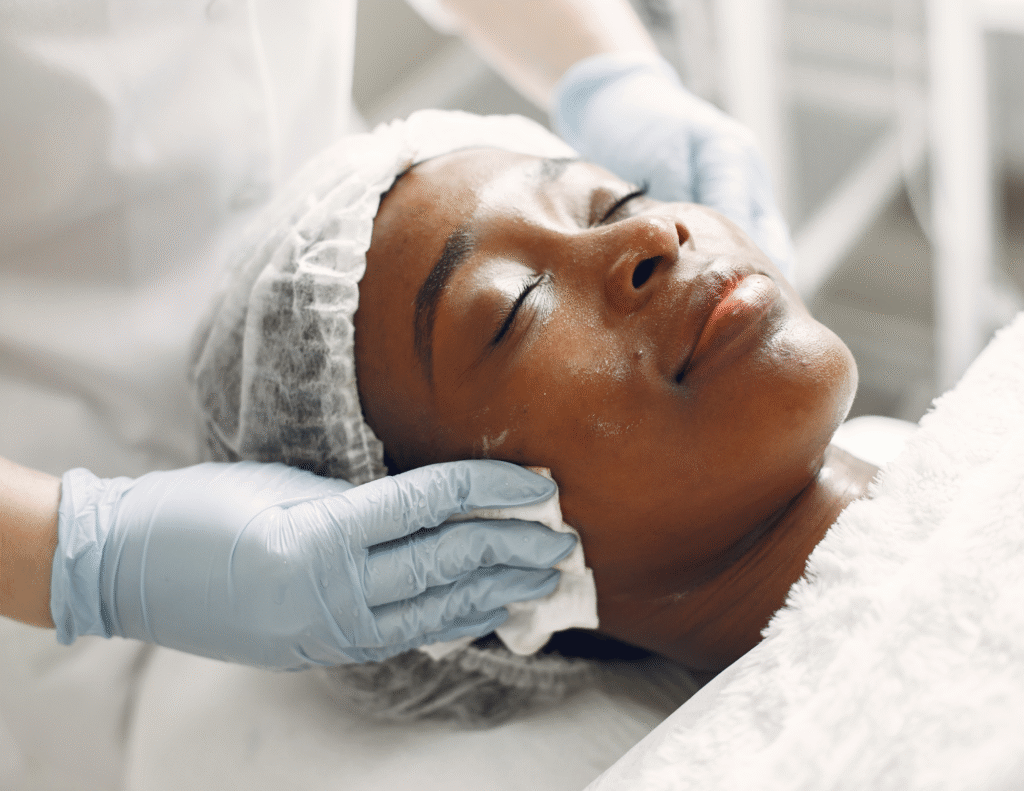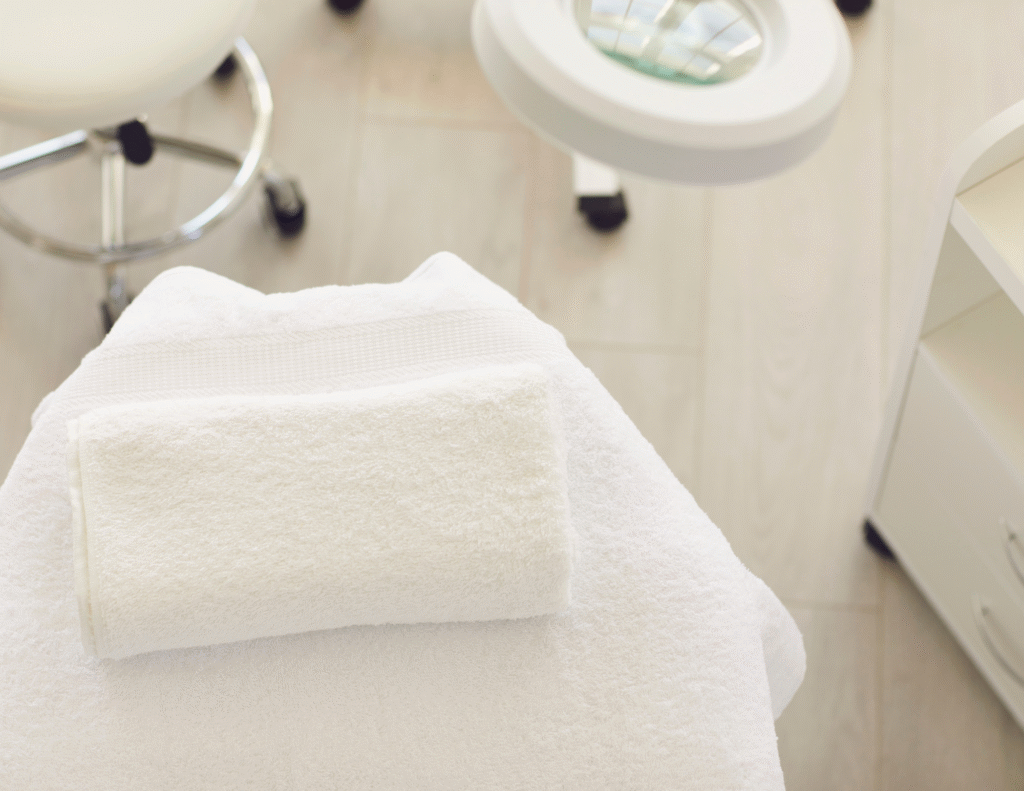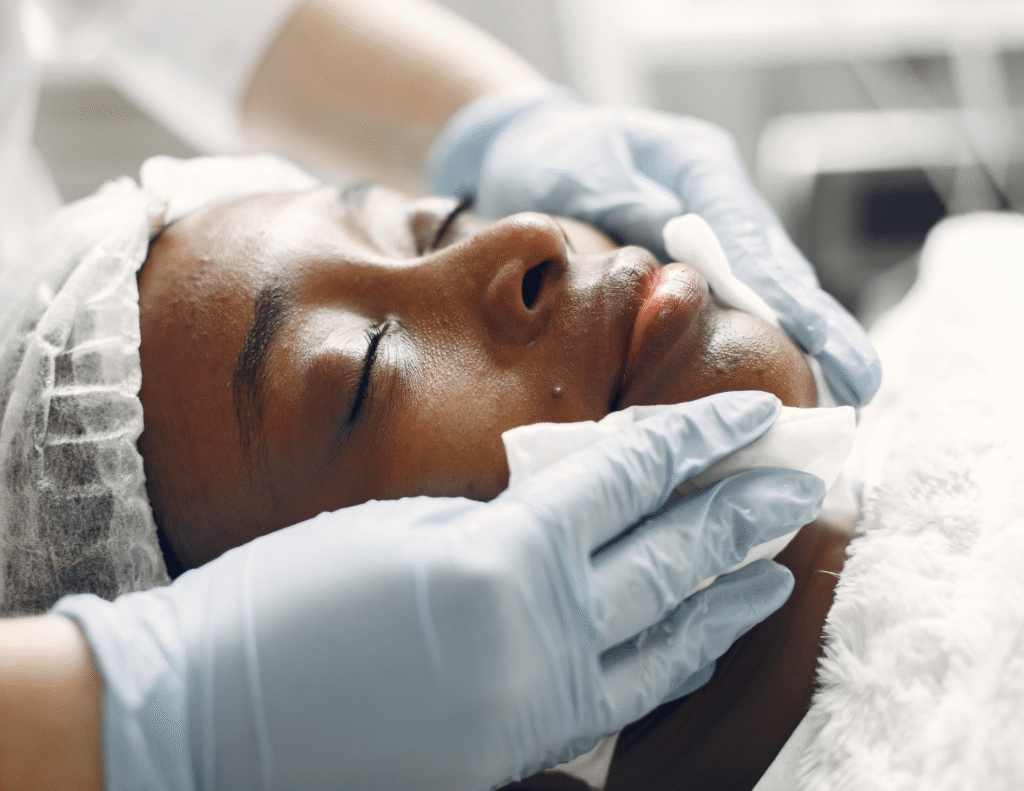Refresh and Rejuvenate Your Skin with Chemical Peels in New Jersey
Chemical peels are one of the most time-tested and effective cosmetic treatments for improving skin tone, texture, and radiance. By applying a customized chemical solution to the skin, the uppermost layers gently exfoliate and peel away—revealing smoother, healthier, more youthful-looking skin beneath. At Skin & Laser Center of NJ, our providers offer safe, professional-grade chemical peels tailored to address concerns such as fine lines, acne, discoloration, and uneven skin texture.


Over time, the skin naturally undergoes changes due to aging, sun exposure, and environmental stressors. These factors, combined with genetics and lifestyle habits, can lead to imperfections that chemical peels help correct, including:
Fine lines and wrinkles caused by collagen breakdown
Sun damage leading to dark spots or pigmentation
Acne and acne scars that affect texture and clarity
Uneven skin tone from hyperpigmentation or melasma
Dull, rough skin that lacks youthful radiance
By encouraging controlled exfoliation and renewal, chemical peels stimulate the body’s natural healing process and promote healthier skin regeneration.
Patients often consider chemical peels when they notice:
Skin that appears dull, tired, or uneven in tone
Visible fine lines or early signs of aging
Acne breakouts or residual acne scarring
Dark spots, freckles, or sun-related pigmentation issues
A desire for smoother, fresher skin without invasive procedures
If these skin concerns are affecting your appearance or confidence, chemical peels may provide the rejuvenation you’re looking for.


Our practice offers a range of chemical peels, each carefully selected to meet your unique skin type and goals. Treatment benefits include:
Customizable strength levels, from superficial to medium-depth peels
Versatility, addressing concerns on the face, neck, chest, and hands
Quick treatment sessions, typically 30 minutes or less
Minimal downtime, depending on peel depth and intensity
Noticeable improvements in skin texture, tone, and radiance
Our providers work closely with you to determine the best peel for your needs, ensuring both safety and effective results.
Learn More About Chemical Peels
Just as there are different skin types and conditions, there are different types of chemical peels to treat them. After examining your skin and discussing your concerns, a provider will recommend the ideal treatment plan for you.
The three chemical peels that you can find at Skin & Laser Center of NJ are:
Alpha-hydroxy acid or another mild acid is used to penetrate only the outer layer of skin to gently exfoliate it. This treatment is used to improve the appearance of mild skin discoloration, acne, clogged pores, and rough skin, as well as to refresh the face, neck, chest, or hands.
Glycolic trichloroacetic acid or other chemicals are applied to deeply penetrate the middle layer of skin to remove damaged skin cells. This treatment removes fine lines, age spots, freckles, and shallow scars. Patients will see a dramatic improvement in skin appearance, but it will involve more peeling and a longer healing time than a superficial peel.
Trichloroacetic acid in higher concentrations is applied to deeply penetrate further into the middle layer of skin to remove damaged skin cells. This treatment addresses moderate lines, age spots, freckles, and shallow scars. Patients will see a dramatic improvement in the skin’s appearance, but it will involve more peeling and a longer healing time than superficial or moderate peels.
At the beginning of your chemical peel at Skin & Laser Center of NJ, the treatment area will be cleaned with a gentle cleanser and then wiped with an alcohol/acetone degreasing solution. A chemical solution will then be applied to the skin. This will cause the skin to become red, then tight, and eventually peel away—a process that can take between five and 10 days. Depending on which type of chemical peel you receive and the size of the area being treated, the entire appointment may take between 10 to 50 minutes. Some peels may be neutralized after a specific amount of time, after which the solution is cleaned off. Stronger peels cause an intense burning feeling that lasts approximately five minutes.
The chemical peel process continues long after the appointment is over. The degree and duration of peeling will vary based on the strength of the skin peel. The newly regenerated skin is usually smoother with fewer wrinkles than the layer it replaced, but it is also temporarily more sensitive to the sun. After your chemical peel, it’s important to follow your provider’s aftercare instructions, including avoiding exfoliants and retinoid creams, minimizing sun exposure, avoiding smoking as it can prolong the healing time and cause an infection, and avoiding peeling or picking the skin.
Beyond peels, Skin & Laser Center of NJ offers several other exfoliating skin rejuvenation treatments, including dermaplaning and HydraFacial MD™.
Convenient walk in hours available below. No appointment needed! Accepting private insurance and medicare. No medicaid plans.
Learn more about medical treatments at New Jersey’s Skin & Laser Center of NJ. Call 201-500-7525 or contact us online to schedule a consultation.